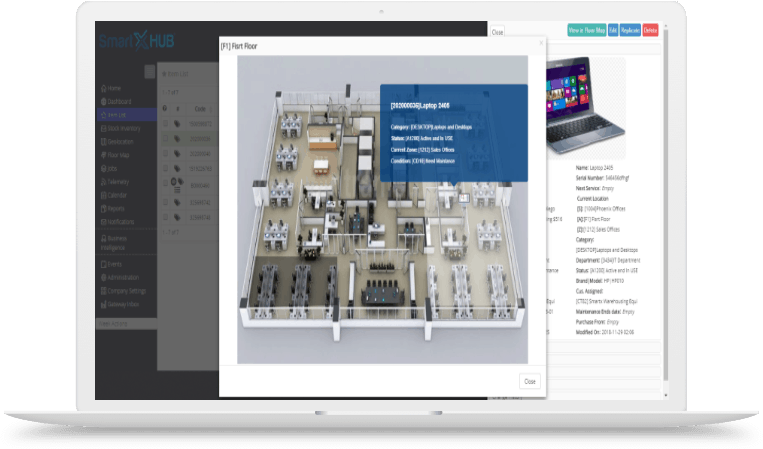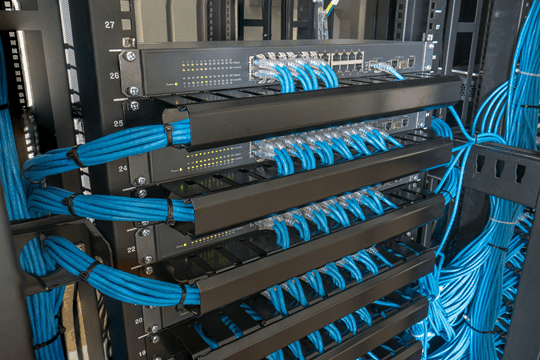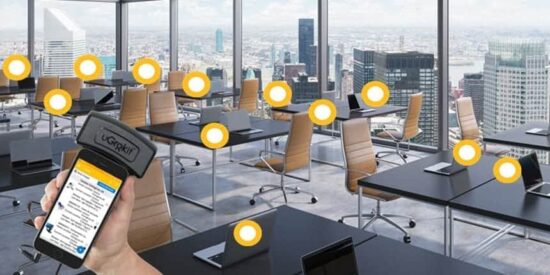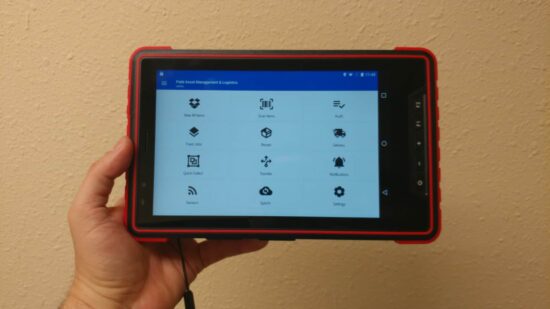- Solutions
- Industries
- IoT Platform
asset management
security
- Resources
Resources
Products
Success Stories
RTLS Fundamentals
- Blog
- About
- En-US
Financial Services, Telecommunications, and other companies use IT to deliver unprecedented levels of productivity and service. Support of their continuous global operations requires IT infrastructure physical, electrical, and HVAC—that has become a substantial component of their physical infrastructure.
As businesses grow more IT-intensive, their IT departments are adopting business methodologies to help them manage IT infrastructure for maximum business value. Running IT effectively as a business may not capture the headlines, but IT Asset Management based on RFID is becoming an essential tool to keep IT cost effective.


Every year, these institutions lose thousands to millions of dollars per establishment simply because they are not accurately tracking and measuring their assets, such as as supplies, computers, and high-value lab equipment.
Well run organizations have a pool of equipment that can be used by multiple departments or divisions. Further, they want to leverage high value capital equipment across organizations, even though they might reside in a specific area. Equipment managers, with their myriad of responsibilities, face challenges tracking the lending out of equipment.
Honor systems where the borrower details what is being borrowed including the type of equipment and its serial number have good intentions but often fail in execution. Few organizations can afford to have someone manually check-in and check-out equipment. Even manual systems with an actual human managing the process are not foolproof because engineers and scientists are often borrowing equipment after hours or on the weekend.as supplies, computers, and high-value lab equipment.

In addition to financial concerns, a plethora of other issues arise when laboratories, and universities don’t maintain solid records of their assets. The following issues could easily be rectified with a robust asset tracking system in place at these institutions:
a) Without software to track and manage IT assets, Enterprises are only left with the option of manually recording and handling inventory using spreadsheets or even regular text documents. Unfortunately, manual asset tracking results in a decrease in both productivity and efficiency across the entire establishment. For example, manually entering and tracking assets uses up lots of time, as does doing audits by hand instead of automating them with asset software. Such time could be saved and put to better use in advancing the laboratory institution’s goals and needs if employees were freed up from manual asset management.
b)As previously mentioned, not tracking assets with a flexible management system often results in items going missing, or being lost entirely. Even with a good emergency or backup fund in place, many Enterprises don’t have enough money to cover replacements for all their missing assets (especially when those numbers reach as high as $250,000 per facility).
c) Both decreased productivity and cost increases can combine to create the additional issue of operational setbacks. For example, any error in manual tracking can lead to confusion about who last touched or used a particular asset, which can then lead to the asset going missing entirely. Enterprises must then figure out how to make do without that asset until it’s replaced (if it ever is).
d) One of the biggest issues which arises for Data Centers companies without reliable asset management technology is a lack of accountability. Without asset tracking software that can easily be updated and accessed across the entire institution’s leadership and staff, how are any of them to know who was last in charge of or touched each asset?

All these problems don’t need to plague finances institutions , and Data center services with doubt and worry. In fact, the solution to avoiding all of them is simple, and yet many labs haven’t implemented it or even considered it before: asset tracking and management software.
SmartX HUB Plataform is a robust, flexible, and cloud-based asset tracking tools with a matching mobile app can help labs institutions alleviate their concerns in a variety of ways.
SmartX HUB RFID-enabled software is “compartmenting” which enables the tracking and managing of an entire data center system asset such multi-rack level enterprise switching system or server blade system as a whole & the individual racked components of that entire system.
The system quickly and accurately accounts for checked out equipment by not only reading all the tagged equipment placed on the checkout counter, but also allowing for additional details to be provided at the time of checking out. Additional details could include project and experiment related information. Check-in process is similarly automated.
The SmartXHUB IT Asset Tracking solution:

Organizations large and small and across industries can leverage RTLS to improve safety, safeguard materials and work more efficiently.
Discover how your peers are benefiting from real-time visibility.
©2014-2024 All Rights Reserved. SmartX Technology Inc